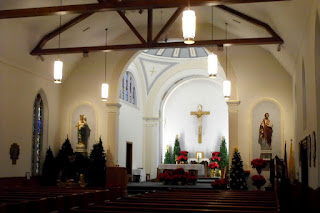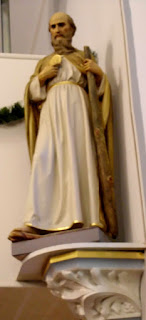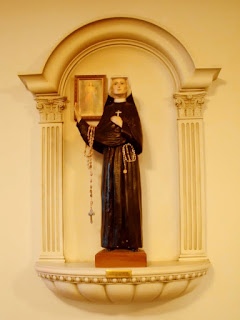
The Village of Maybee was named after Abram Maybee, who, along with Joseph Klotz, between 1873 and 1875, surveyed, platted, and sold the land that became the village. Farmers soon moved to the area and St. Joseph Parish was established in 1889.

A parish school opened at an unknown date, later closed, and the building was demolished in 1988.

In 2013, St. Joseph merged with St. Patrick Parish (est. 1860) in Carleton to form the new parish of Divine Grace. The two churches are about six miles apart.

A bell named "Susan" was christened in 1890 and donated by Susan Scheich. It currently stands in front of the rectory.


St. Joseph stands over the center door; two angels at the sides of the front steps.


A depiction of the Holy Spirit is shown in the dome above the main altar.


Our Lady Help of Christians and St. Joseph at the side altars.


Stained-glass windows all have the same geometric pattern as well as religious symbols in the center.


A statue of St. Isidore the Farmer in recognition of the mostly agricultural community. A statue of St. Thomas Aquinas recognizing the Adrian Dominicans who taught at the school. St. Therese stands in near the stairway to the choir loft.



The Sacred Heart of Jesus on the front of the choir loft and above the center aisle; St. Anthony with Child Jesus and St. Jude at the corners of the choir loft.




St. Michael the Archangel and Our Lady of Fatima on the back wall.


St. Faustina Kowalska and the Infant of Prague at the back of the church.



Mass is at 8:00am on Sundays, Wednesdays, and the First Saturday of the month. Wednesdays bring 8:00am Mass followed by Mother of Perpetual Help devotions. Confessions are heard on the first Wednesday of each month, after 8:00am Mass, or by appointment.


A parish cemetery stands about half a mile northeast of the church, across the street from a public cemetery.

A large crucifixion scene stands in the middle of this cemetery.


Many of these graves date back to the early days of the village, some as early as the 1890s.




No comments:
Post a Comment